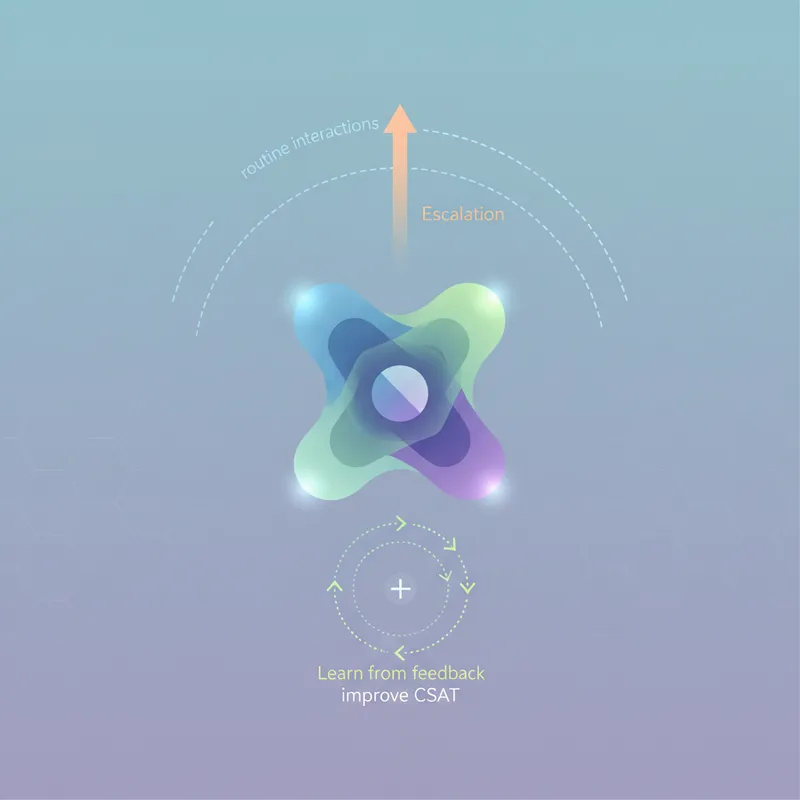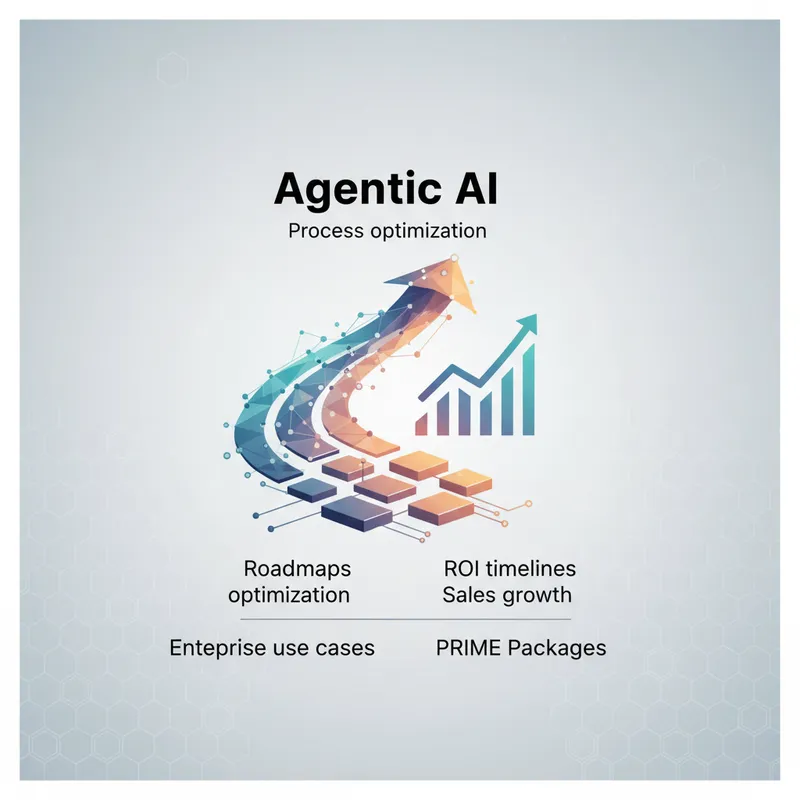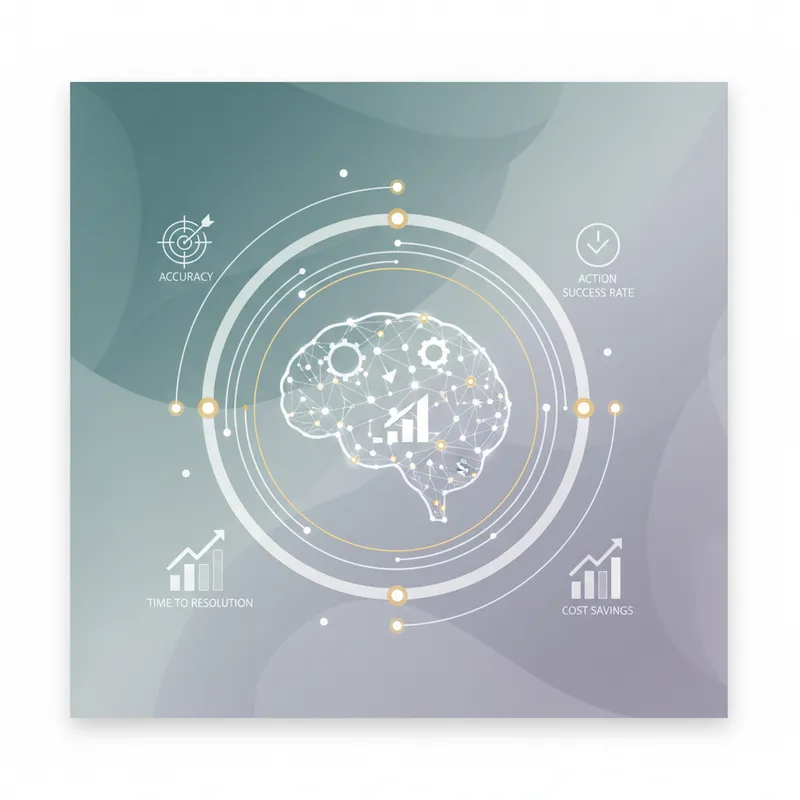
Introduction
The gen AI paradox CEO playbook is an executive roadmap for leaders who are frustrated with pilot fatigue and the gap between experimentation and measurable value. Many organizations have adopted generative AI tools, yet struggle to produce consistent financial returns or operational breakthroughs. This playbook reframes that gap as the gen AI paradox and points to a higher potential: agentic AI that acts autonomously to coordinate workflows, decision steps, and continuous learning across the enterprise. Learn more in our post on Security and Compliance for Agentic AI Automations.
This guide distills actionable frameworks for strategy alignment, an operating model that supports agents, and metrics that show scalable impact. It is written for CEOs and top teams who need to move from multiple pilots to company level deployment while avoiding common governance, change management, and measurement pitfalls. The approach is pragmatic, emphasizing portfolio prioritization, value mapping, capability investments, and a migration path that balances speed with risk controls. If your leadership team is asking how to translate early wins into sustainable advantage, this gen AI paradox CEO playbook is designed to help you lead that transition with confidence.
Understanding the gen AI paradox
The first step in the gen AI paradox CEO playbook is to define the problem precisely. The gen AI paradox is simple to state and hard to solve. Many teams are running models and delivering prototypes, yet most C suite leaders report limited bottom line impact. This outcome stems from fragmented initiatives, unclear ownership, lack of operational integration, and insufficient incentives to change existing processes. Recognizing this is essential. The paradox is not that AI is ineffective. The paradox is that AI is effective when tightly integrated into operations, and yet organizations rarely create the structures required to achieve that integration. Learn more in our post on Future of Work Q3 2025: Agentic AI as the New Operations Layer.
Agentic AI provides a different path. Rather than delivering standalone outputs that require human orchestration, agentic systems can perform multi step tasks, coordinate across systems, and escalate decisions to humans when necessary. When designed correctly, agents reduce friction in a process, free skilled workers from repetitive coordination tasks, and create measurable time and cost savings. But agentic AI also raises complexity for leadership: it requires cross functional alignment, new deployment standards, and evolving measurement approaches. The gen AI paradox CEO playbook shows how to resolve those tensions and unlock scalable value.
Leaders must stop treating AI as a set of isolated experiments. Instead, they should view AI as an operating capability that requires continuous governance, capacity building, and a portfolio mindset. This shift is the core premise of the gen AI paradox CEO playbook. The remainder of this guide sets out the playbook components CEOs can use to translate experiments into enterprise scale returns, including strategy, operating model design, measurement, and implementation steps.
Aligning strategy: from use cases to enterprise advantage
Strategy alignment is the most strategic lever in the gen AI paradox CEO playbook. Without clear executive priorities, investment dispersion will persist. Start by mapping AI opportunities to company level objectives such as revenue growth, margin improvement, risk reduction, and customer experience. Prioritize initiatives that have high value density, meaning a high ratio of potential value to implementation complexity. This ensures early wins can fund broader efforts and demonstrate the power of agentic AI in live operations. Learn more in our post on Agentic AI Solutions for Business: Packages, Use Cases, and ROI Estimates.
Use a portfolio approach that balances three types of initiatives: foundational capabilities, scale plays, and moonshots. Foundational capabilities include data infrastructure, identity and access controls, and integration layers that agents need to operate reliably. Scale plays are the repeatable processes where agentic AI can produce measurable returns, for example in customer service orchestration or automated compliance workflows. Moonshots are strategic bets that may take longer to prove but can reshape business models. A balanced portfolio prevents the gen AI paradox from reemerging by ensuring resources are allocated to both immediate and long term opportunities.
Translate strategy into clear accountability. Assign executive sponsors for each prioritized account of value, ensure cross functional representation, and create a steering committee that meets regularly to reassess portfolio priorities. The gen AI paradox CEO playbook recommends setting explicit business cases for each major initiative and combining financial metrics with operational success criteria. This combination helps the executive team understand both the expected return and the operational changes required to capture it.
Practical steps for strategy alignment
- Conduct a rapid value scan to identify top 10 opportunities tied to company KPIs.
- Score opportunities by value density, scalability, and time to impact.
- Allocate budget and capability investment to ensure at least two scale plays are funded centrally.
- Define clear ownership, success metrics, and escalation paths to the CEO office.
Embedding these steps into your strategic planning process is essential to making the gen AI paradox CEO playbook operational and ensuring AI moves from isolated pilots to enterprise impact.
Designing an operating model for agentic AI
An operating model is how strategy becomes repeatable action, and designing it for agentic AI is central to resolving the gen AI paradox CEO playbook. Traditional operating models often separate analytics teams, IT, and business units. Agentic AI requires a tighter integration where agents live at the intersection of data, processes, and frontline users. Build cross functional teams that combine product management, platform engineering, data science, and domain experts into a single delivery unit for each scale play.
Define a deployment pipeline specific to agentic capabilities. Agents need continuous training data, acceptance testing that simulates multi step workflows, and monitoring that looks beyond model accuracy to behavioral outcomes. Create a staging environment for agentic testing where agents can execute tasks on synthetic or sandboxed data to evaluate safety, task completion rate, and decision audit trails. This is not a one time setup. The pipeline must support continuous improvement and model rollbacks when performance deteriorates.
Rethink resource allocation and skills. Hiring only model builders will not solve the gen AI paradox. You need engineers who understand APIs and integrations, product owners who can translate value into agent specifications, and operations staff who can oversee agent behavior in production. Invest in training and redefine roles so that existing employees can work alongside agents effectively, focusing on higher value activities while agents handle coordination and routine decision tasks.
Operating model checklist
- Cross functional delivery units aligned to prioritized use cases.
- Agent testing and staging environment with safety gates.
- Monitoring dashboards that track operational KPIs and agent behavior.
- Clear runbooks for incidents, rollbacks, and human escalation protocols.
- Capability development plans for reskilling and role redesign.
These elements bridge the gap between prototype and scale. They make agentic systems reliable and auditable, which is necessary to sustain executive confidence and avoid the fragmentation that underlies the gen AI paradox CEO playbook.

Metrics and measurement: what to track and why
Metrics are the language of business decisions and a central pillar of the gen AI paradox CEO playbook. Traditional AI metrics like accuracy and F1 score are necessary but insufficient. When agents are operating across systems and people, you must measure business impact, operational stability, and human adoption. Define a metric hierarchy that links agent performance to leading operational indicators and lagging financial outcomes.
Leading indicators might include task completion rates, time to resolution, agent handoff frequency, and error rates during live workflows. These metrics predict whether an agent is behaving as expected. Lagging indicators should capture concrete business outcomes such as reduction in cost per transaction, increase in customer retention, faster cycle times, or revenue uplift. Create dashboards that present both sets of metrics in context so leaders can diagnose issues and prioritize interventions.
Introduce adoption and behavior metrics. The gen AI paradox CEO playbook emphasizes that technical performance does not automatically translate into user adoption. Measure user satisfaction, percentage of workflows routed through agents, changes in human task time, and adherence to new processes. Track these over time to ensure that agents are not just present but effectively changing how work gets done.
Measurement governance and incentive design
Measurement governance ensures metrics are trustworthy and used to inform decisions. Establish a metrics owner who is accountable for data definitions and reporting cadence. Build review rituals where the steering committee evaluates portfolio health using the agreed metric hierarchy. Make incentives explicit. Tie parts of performance reviews or investment decisions to measurable improvements that result from agentic AI, such as cost savings or customer experience gains. This alignment motivates business leaders to prioritize integration and change management rather than short lived pilots.
Including this measurement layer closes the feedback loop between pilots and scale and addresses the core dilemma in the gen AI paradox CEO playbook: pilots are abundant but proof of sustained value is rare. By measuring the right things, you can convert prototypes into repeatable outcomes that the entire organization can trust.
Roadmap: moving from pilots to scalable impact
Converting experiments into enterprise impact requires a clear and staged roadmap. The gen AI paradox CEO playbook recommends a three phase approach: stabilize, scale, and embed. The stabilize phase focuses on demonstrating repeatable outcomes and creating baseline infrastructure. The scale phase expands agentic solutions across business units and integrates them into core processes. The embed phase institutionalizes AI driven ways of working and aligns organization design to sustain continuous improvement.
During the stabilize phase, run focused pilots with clearly defined acceptance criteria. Use pilot results to refine data requirements, define agent behaviors, and validate business cases. Keep the scope narrow to prove viability quickly. The objective is not to perfect the agent but to demonstrate a measurable improvement in a real workflow with real users.
In the scale phase, invest in platform capabilities that make deployment repeatable. This includes agent orchestration layers, model registries, CI CD pipelines for agents, and centralized monitoring. Start standardizing APIs and creating reusable templates for common tasks so that new deployments require less custom integration. Encourage business units to adopt proven templates and hold central teams accountable for enabling self service deployment while maintaining guardrails.
Embed phase and cultural change
The embed phase is about organizational transformation. Redesign operating processes so agents are part of standard operating procedures. Update role descriptions, training programs, and performance metrics so that employees are rewarded for working effectively with agents. Leadership must signal that AI driven transformation is non optional by building it into strategic planning and capital allocation. Use change management approaches that include stakeholder mapping, targeted communications, and hands on training to accelerate adoption.
By following these stages, the gen AI paradox CEO playbook helps CEOs convert promising experiments into systemic capability, reducing the risk that early wins remain isolated. This staged approach balances speed with operational reliability so that agentic AI becomes a source of sustained competitive advantage.

Governance, safety, and risk management
Risk and governance are central to the gen AI paradox CEO playbook because agents have the potential to take autonomous actions that affect customers and financial outcomes. Governance should be light touch enough to not stifle innovation and rigorous enough to prevent harm. Establish a governance framework that covers risk classification, approval pathways, and audit obligations. Differentiate controls by risk tier so lower risk agents can be deployed quickly while high risk agents require deeper review.
Key governance elements include clear ownership of agent decisions, access controls for sensitive data, logging and explainability for decision steps, and incident management processes. Ensure that agents cannot perform irreversible actions without human approval unless the risk profile supports it. The gen AI paradox CEO playbook also recommends periodic red teaming and scenario based testing to surface edge cases and failure modes. This helps leadership maintain confidence that agents will behave reliably in production.
Legal and compliance teams must be integrated into the governance process early. They help define acceptable use cases and ensure contractual obligations and regulatory requirements are addressed. Make compliance part of the design process rather than an after thought. This reduces rework and prevents costly rollbacks after deployment.
Practical governance checklist
- Risk based approval workflow with clear time to decision.
- Data classification and least privilege for agent access.
- Comprehensive logging and audit trails for agent actions.
- Incident response playbooks and human escalation triggers.
- Periodic external and internal reviews to validate safety.
Strong governance protects the enterprise while enabling scale. It assures stakeholders that agentic systems are controlled and accountable and reduces the chance that leadership will revert to cautious experimentation that perpetuates the gen AI paradox CEO playbook.
Organization and talent: building the right capabilities
People are pivotal to making agentic AI work at scale. The gen AI paradox CEO playbook emphasizes hiring and reskilling in parallel. You will need to bring in specialized talent such as agent engineers, MLOps experts, and product managers with experience in human centered AI. At the same time, invest in reskilling programs for existing employees so they can interact with agents and focus on value creating activities.
Create career paths that reflect the new ways of working. Reward collaboration between domain experts and technical teams. Encourage rotations where product managers or operations leaders spend time embedded with agent development teams. This builds shared understanding and reduces the translation gap that often slows deployments. Consider centralized capability centers that offer shared services such as agent templates, monitoring tooling, and training resources to accelerate business unit adoption.
Leadership should communicate career narratives that explain how roles will evolve and what skills will be valued. Transparent communication reduces fear and increases engagement. Incorporate training programs that are hands on and role specific so learners can apply new skills directly to live work. The gen AI paradox CEO playbook shows that when people understand the opportunity and have a clear path to grow, adoption rates increase and pilots more readily transition to production.
Change management and culture
Culture determines whether agentic AI becomes a transformative capability or a collection of niche tools. The gen AI paradox CEO playbook encourages leaders to treat adoption as a change management program with measurable goals. Start by mapping stakeholder journeys and identifying early adopters who can act as champions within business units. Use storytelling to describe the new future of work and demonstrate tangible examples of improved outcomes.
Design experiments that include frontline workers from day one. Agents are more likely to be accepted when users help shape the agent behavior and control escalation rules. Provide safe spaces for feedback and continuous iteration. Celebrate early successes publicly and address setbacks transparently. Change is iterative, and the most successful organizations adopt a learning mindset where failures are diagnostic rather than fatal.
Finally, ensure leaders model the desired behaviors. When the C suite uses agents to inform decisions and reconfigures meetings around outputs from agents, the broader organization follows. Leadership visibility and active sponsorship are major determinants of whether the gen AI paradox CEO playbook produces real change or merely more pilots.

Technology stack and integration patterns
Technology choices should enable speed and reliability. The gen AI paradox CEO playbook recommends a modular stack with clear boundaries between model components, orchestration layers, and enterprise systems. Use a central agent orchestration platform that can manage agent lifecycle, routing, and state. Keep models decoupled from business logic so you can update models without rewriting workflow rules.
Integration patterns need to support both synchronous and asynchronous tasks. Agents will often coordinate across legacy systems that do not share a common protocol. Use adapters and middleware to bridge these systems and implement robust error handling. Emphasize idempotent operations and transaction safety to prevent data corruption when agents retry actions. Reliability at the integration layer reduces operational incidents and increases trust in agent behavior.
Plan for observability from the outset. Instrument agents with metrics that capture not only model level performance but also workflow completion, latency, and downstream effects. Invest in tracing mechanisms that can reconstruct decision paths for audits. These investments pay off when you need to diagnose complex failures or explain decisions to regulators or customers. The gen AI paradox CEO playbook calls for this upfront investment to avoid costly retrofits that delay scaling.
Financial planning and ROI modeling
Financial rigor turns enthusiasm into prioritized investment. The gen AI paradox CEO playbook advises creating detailed ROI models that account for the full cost to value conversion. Include development costs, infrastructure, change management, and ongoing monitoring in your investment case. Model both one time gains such as reduced headcount in specific processes and ongoing benefits such as improved customer retention or faster time to market.
Use scenario analysis to capture uncertainty. Build best case, base case, and conservative case projections for each prioritized initiative. This helps leadership understand sensitivity to assumptions like adoption rates and productivity improvements. Tie investment approvals to milestones and use stage gates to manage risk. For example, conditional funding can be released when pilots meet predefined operational and financial criteria.
Finally, ensure that financial tracking continues post deployment. Many initiatives show initial gains that erode over time without continuous improvement. Track realized benefits against forecasts and use that feedback to refine both models and operating practices. This disciplined approach reduces the chance that promising pilots fail to generate sustainable returns and helps solve the gen AI paradox CEO playbook problem of abundant experiments but limited enterprise impact.
Common pitfalls and how to avoid them
There are recurring mistakes that keep organizations trapped in the gen AI paradox CEO playbook. First, failing to prioritize leads to too many pilots and too few meaningful deployments. Remedy this by using a value density framework and by committing central resources to scale plays. Second, ignoring integration and operations results in brittle deployments. Invest in orchestration, staging environments, and runbooks. Third, neglecting change management leads to low adoption. Involve users early and design training programs that focus on real workflows.
Another common trap is underestimating governance needs. Without risk based controls, organizations can face reputational and regulatory consequences that halt progress. Build pragmatic governance that scales with risk and integrate legal and compliance partners from the start. Finally, insufficient measurement creates ambiguity. Use the metric hierarchy described earlier to link technical performance to business outcomes so that leaders can make informed trade offs.
Addressing these pitfalls directly is what distinguishes a leader who solves the gen AI paradox CEO playbook from one who accumulates pilot artifacts. The emphasis must be on creating repeatable processes, aligning incentives, and investing in the infrastructure and people that transform experiments into durable advantage.
Conclusion
The gen AI paradox CEO playbook is a pragmatic framework for CEOs who are committed to turning promising generative AI experiments into lasting enterprise value. The paradox is that adoption does not equal impact. To resolve that, leaders must align strategy to prioritized value opportunities, design an operating model that supports agentic behavior, and implement a measurement system that connects agent performance to business outcomes. This playbook is not a technical manual. It is an executive guide for decision making, governance, and organizational change.
Leader involvement matters. CEOs must set priorities, allocate resources, and hold teams accountable for both operational and financial outcomes. Centralized capabilities such as agent orchestration, monitoring, and templates accelerate scale by lowering integration costs for business units. Governance must be risk based and pragmatic so that innovation can proceed safely while compliance obligations are met. Investing in training and role redesign reduces friction and improves adoption by showing employees how agents augment rather than replace human judgment.
Implementing the gen AI paradox CEO playbook requires a three phase roadmap: stabilize, scale, and embed. Stabilize proves repeatable outcomes with clear acceptance criteria. Scale builds platform and integration capacity to expand deployment. Embed institutionalizes AI driven ways of working and aligns culture, incentives, and metrics to sustain continuous improvement. Financial rigor is critical throughout. Use scenario analysis and staged funding tied to milestones so that investments are disciplined and tied to measurable returns.
Practical governance, transparent metrics, and consistent change management reduce the chance that experiments remain isolated. The playbook offers a set of concrete actions: prioritize high value density opportunities, form cross functional delivery units, instrument agent behavior with both leading and lagging metrics, build a risk based governance framework, and commit to reskilling and role redesign. When these elements are combined, organizations can unlock the promise of agentic AI and convert early experimentation into systemic advantage.
For CEOs, the question is not whether to invest in AI. The question is how to invest in a way that resolves the gen AI paradox CEO playbook and produces measurable, scalable impact. This guide provides the structure to answer that question. By aligning strategy, operating model, metrics, and governance, leadership can ensure agentic AI becomes a durable source of efficiency, innovation, and competitive differentiation.




